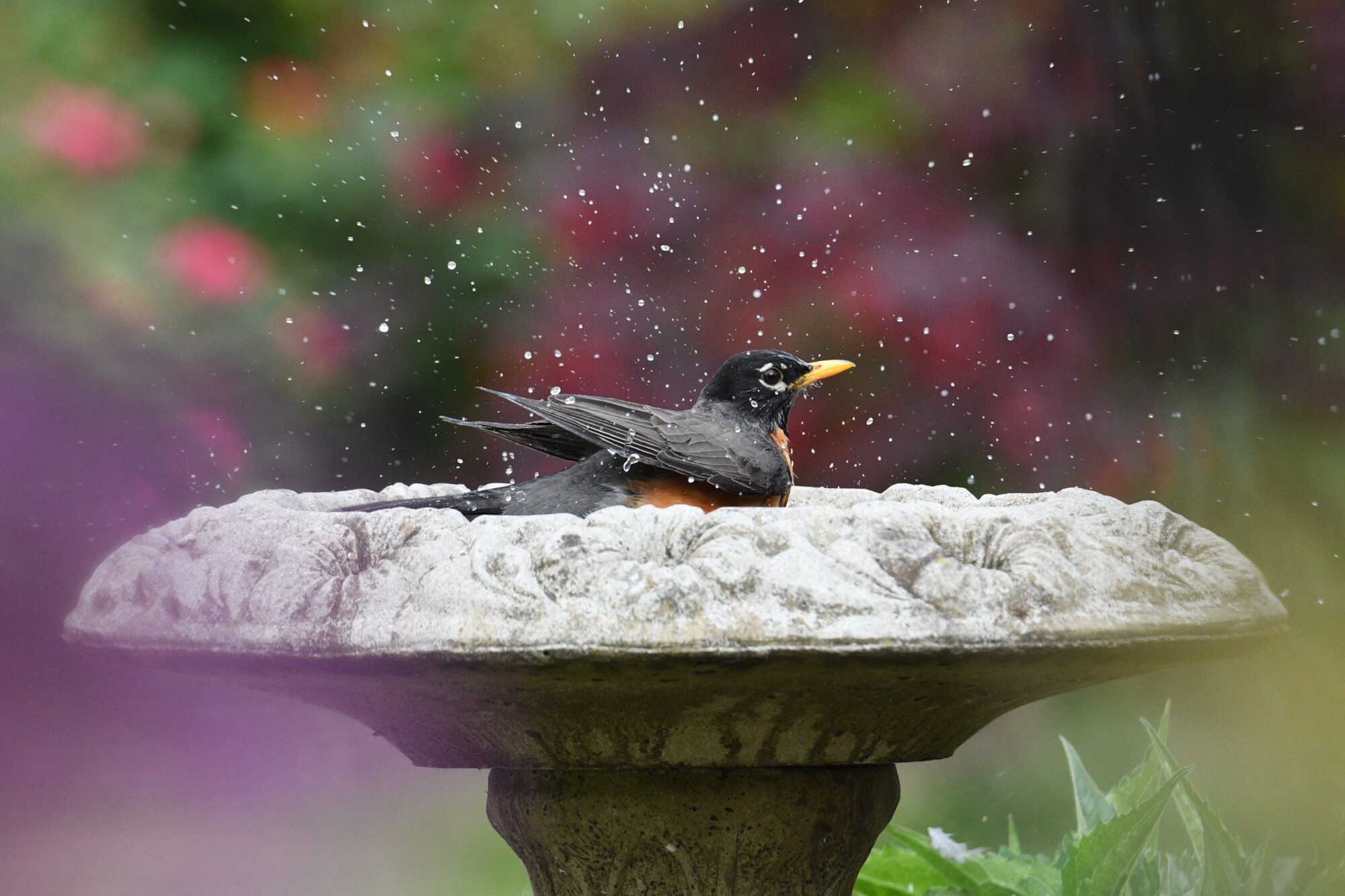
There’s nothing more peaceful than waking up in the morning and hearing the birds singing outside. You hear their songs every day, but have you ever stopped to think about who those visitors are?
You don’t have to be a bird watcher to enjoy our fine feathered friends that visit our backyards. American birds can be spotted everywhere from the sky to the ground, and they all have their own unique behaviors. Read on to learn all about them!
1. Red-Winged Blackbird
Crows, ravens, and blackbirds, how do you tell them apart? They all look about the same, right? They might look pretty similar, but when the male red-winged blackbird takes flight, you’ll know exactly what you’re looking at.
Red-winged blackbirds are super common and are found throughout North America. You can distinguish them by the vibrant patch of scarlet on their wings.
If you don’t see them in your backyard, you won’t have to go far to find one. Check out areas that have ponds or areas that are thick with weeds.
Like many species of birds, the red-winged blackbird is sexually dimorphic. Females are dark brown in color, and they bear a closer resemblance to a sparrow than a blackbird.
2. Mourning Dove
Have you ever walked out of the house in the morning and heard the soft cooing of a bird in the distance? You might think you’re hearing the hooting of an owl, but you’re probably hearing a mourning dove.
With the exception of northern climes in Canada and Alaska, mourning doves can be found throughout America and most of Mexico. They love open woodlands and enjoy eating seeds from the ground.
Want to encourage mourning doves to visit your yard? Try scattering seeds and millet on the ground. Be sure to keep your cats inside the house to help the doves feel safe to visit.
Setting up bird feeders is also an option. Check out the article “Bird Feeding Stations: How To Design the Perfect Backyard Habitat” to become a pro bird feeder.
3. Cedar Waxwing
The Cedar Waxwing is probably the most spectacular bird that you’ve never heard of. These small birds have a body that fades from tan to dark gray, and yellow bellies and tail tips. Their eyes are masked in black.
These are truly beautiful birds, but they’re truly magical when they’re in flight. Cedar Waxings fly in large flocks, flittering acrobatically from tree to tree. They’re also quite vocal, so you might hear them long before you see them.
Cedar Waxwings subsist on a diet of berries. If you want to encourage visits from this stunning bird, be sure to plant trees and bushes that bear fruit. Think juniper, winterberry, cedar, and dogwood.
Fun fact: Cedar Waxwings have a tendency to become drunk when they eat too many berries that have fermented on the tree.
4. American Robin
What’s more American than the American Robin? They have inspired several songs, so shouldn’t we know more about this backyard visitor?
American robins are a medium-sized bird that has taupe-colored wings and head and a rust-colored belly. You’re unlikely to notice this bird in the air. Instead, check out the ground as they forage for insects and seeds, especially after a good rain.
Most people notice robins in their yard toward the end of winter. In fact, some believe that the sight of a round of robins on the ground is a harbinger of spring.
5. Northern Cardinal
Few birds in North America are as visually striking as the Northern Cardinal. You’ll know them by their vibrant red plumage and the black mask over their eyes.
Like the red-winged blackbird, Northern Cardinals are sexually dimorphic. Females are mostly a warm brown color, with red on their wings and crest, and the signature vivid orange beak. You’ll often find Northern Cardinals in mated pairs, and many stay with their mate for life.
They tend to forage for seeds on the ground, so be sure to throw some seeds out into the yard if you want to attract them. They’re especially big fans of sunflower seeds!
Don’t be surprised if you notice them chasing off other birds during the spring. Cardinals are territorial!
6. Northern Mockingbird
A list of American birds would not be complete without an entry for the Northern Mockingbird. This bird is legendary, thanks to Harper Lee’s famous book, “To Kill a Mockingbird.”
Northern Mockingbirds are medium in size and covered in gray feathers, with a cream-colored belly and a white stripe across their wings that you can see in flight. They’re notorious for their ability to mimic the cries of other birds and even car alarms.
Like the Northern Cardinal, the mockingbird is territorial. In fact, they’re one of the most aggressive defenders of their nests out there. They’ve been known to dive-bomb everything from cats to crows to people if they think you’re getting too close to their nest.
Once a Northern Mockingbird sees you as a threat, you can expect repeated attacks as long as there are birds in the nest. That’s right, a mockingbird has a knack for remembering a face.
7. Red-Bellied Woodpecker
Last, but not least, is the Red-Bellied Woodpecker! These birds have a red cap on their white heads, and the plumage on their body is made up of striking stripes of black and white.
You’re more likely to hear this bird drilling into a tree than to see it. They nest in tree cavities and subsist on a diet rich in insects.
Fun fact: the Red-bellied Woodpecker has a tongue that is barbed and sticky. It can stick its tongue out more than two inches past its beak to grab insects from crevices in the trees.
There’s No Shortage of American Birds to Watch and Enjoy!
No matter where you live in America, there’s plenty of American birds flying through the sky to check out. As an added bonus, check out bird migration patterns. You never know which birds might come knocking at your door during the winter, spring, summer, and fall!
Birds are one of the best parts of the great outdoors. Want to learn more about how you can get out and see them? Check out the rest of our blog for tons of tips that’ll get you out and active!




